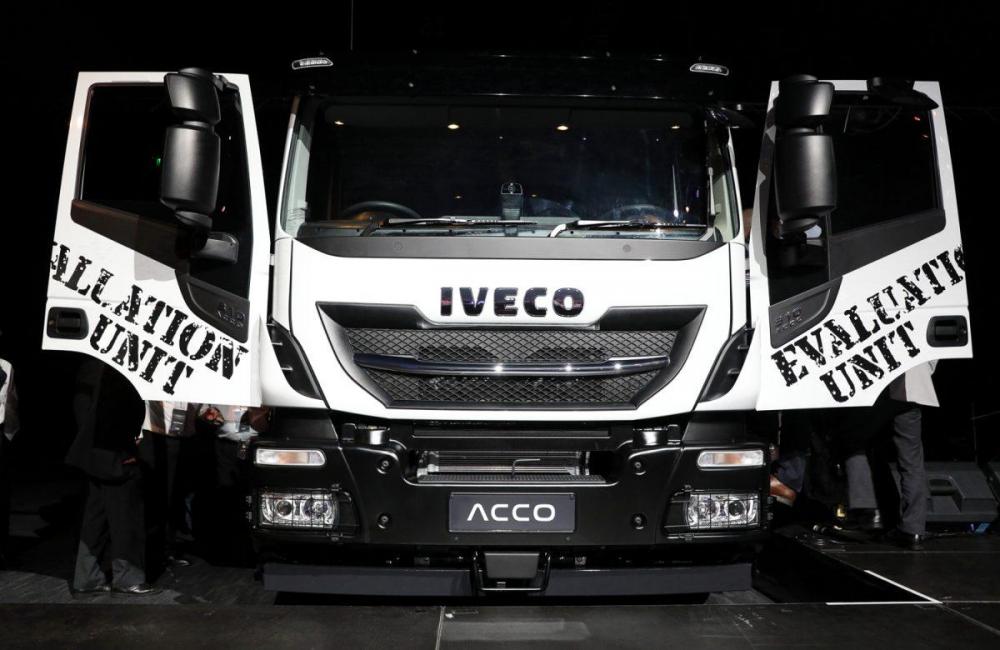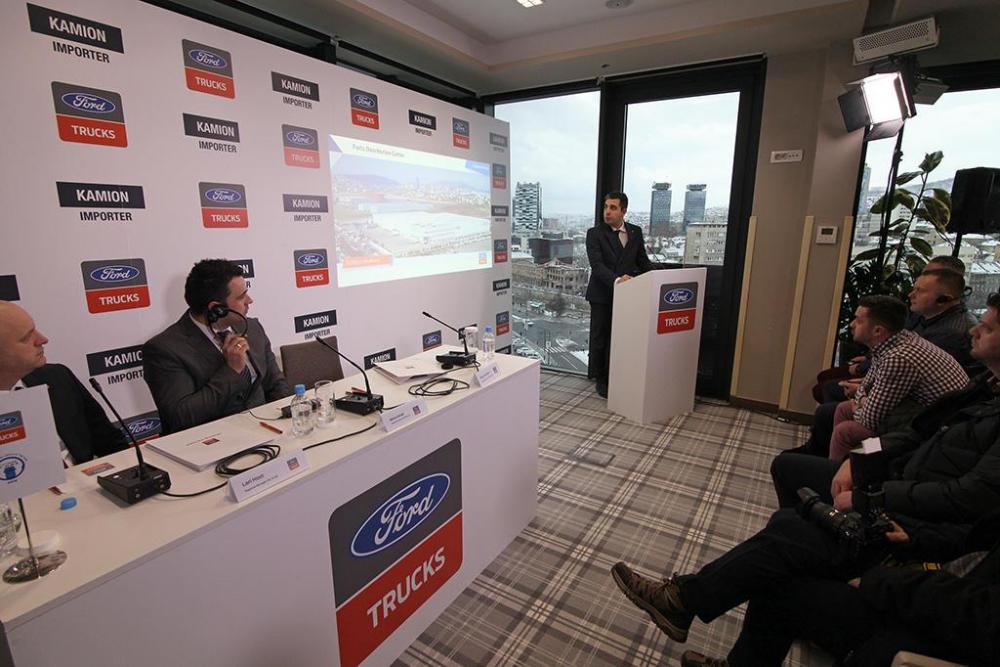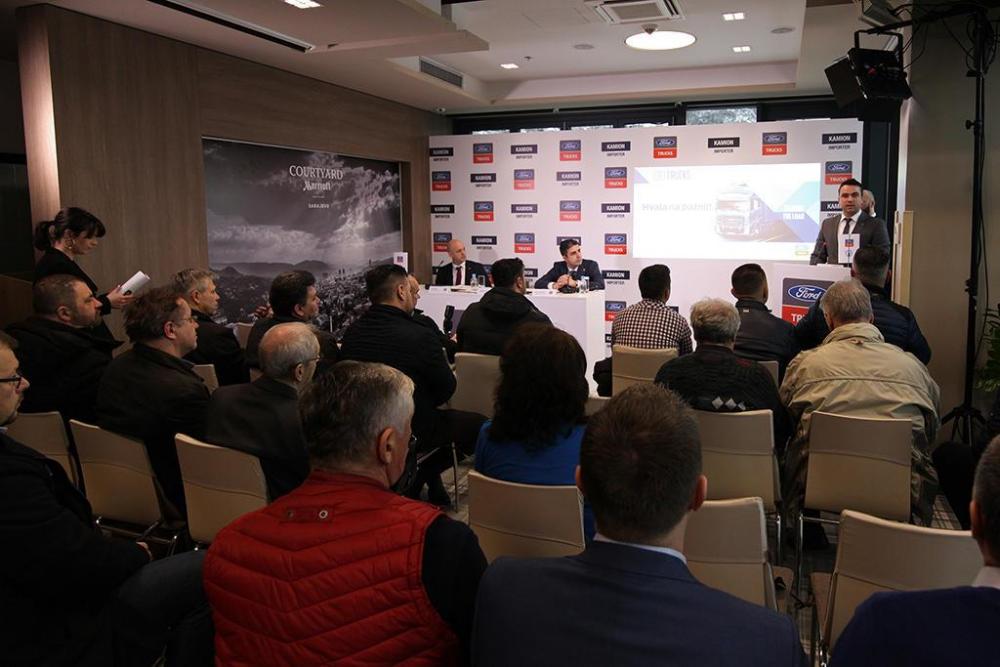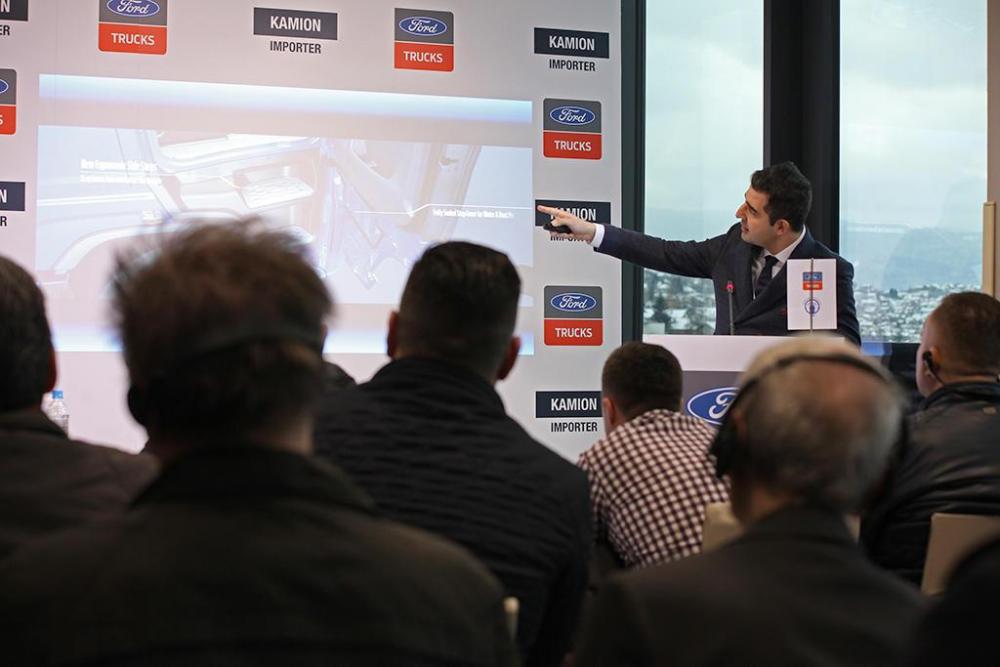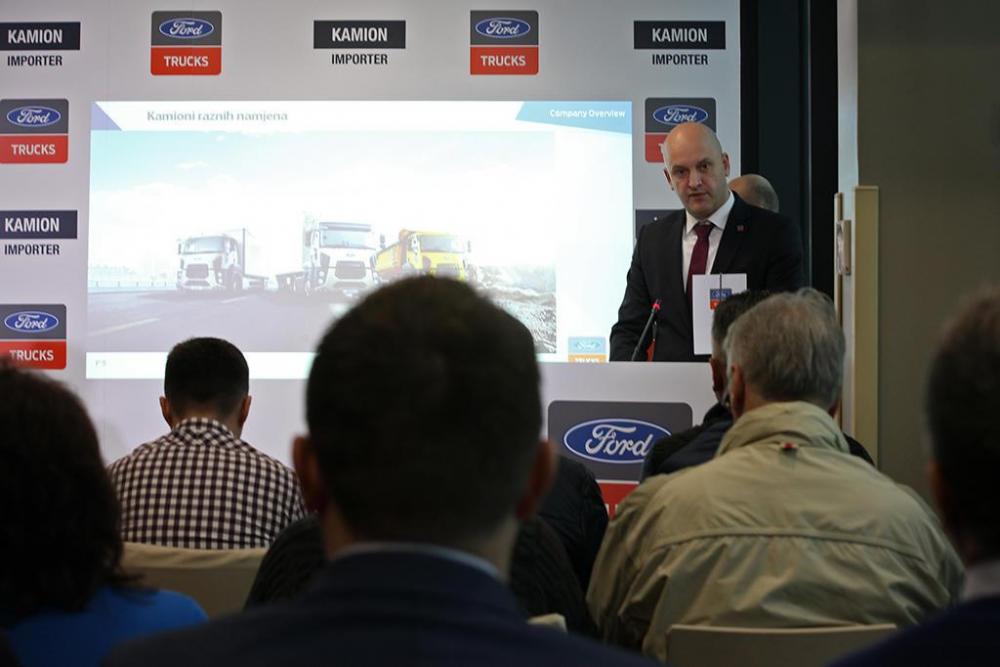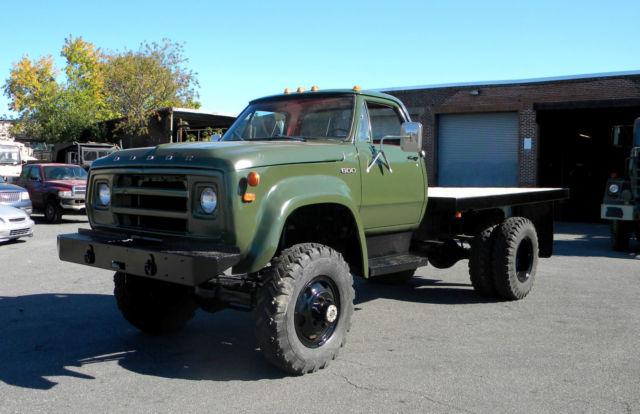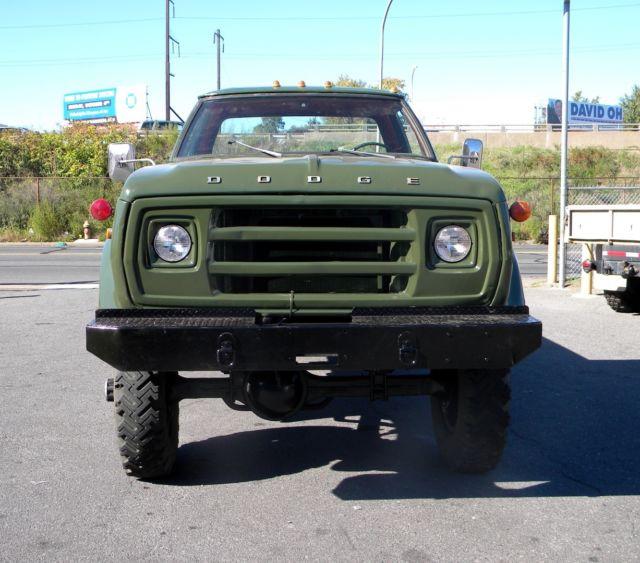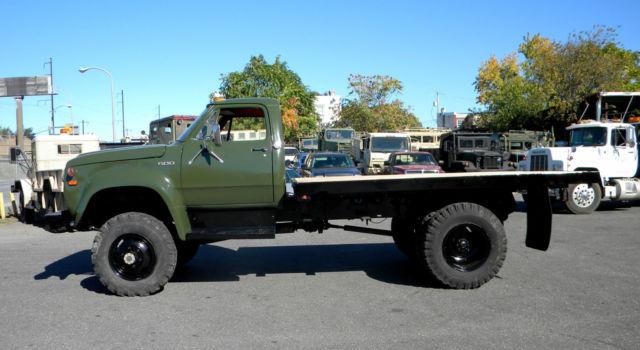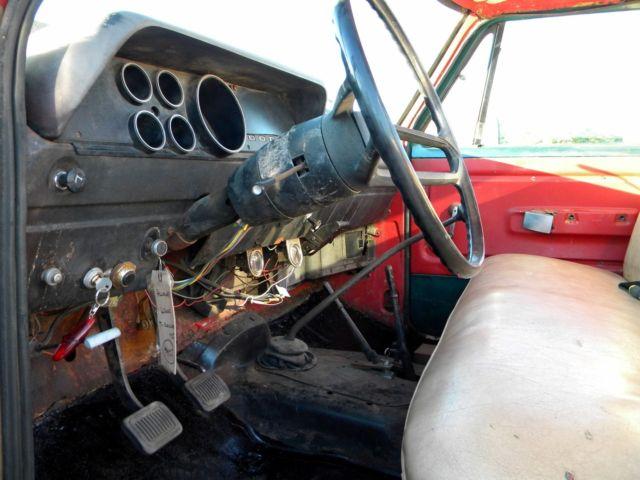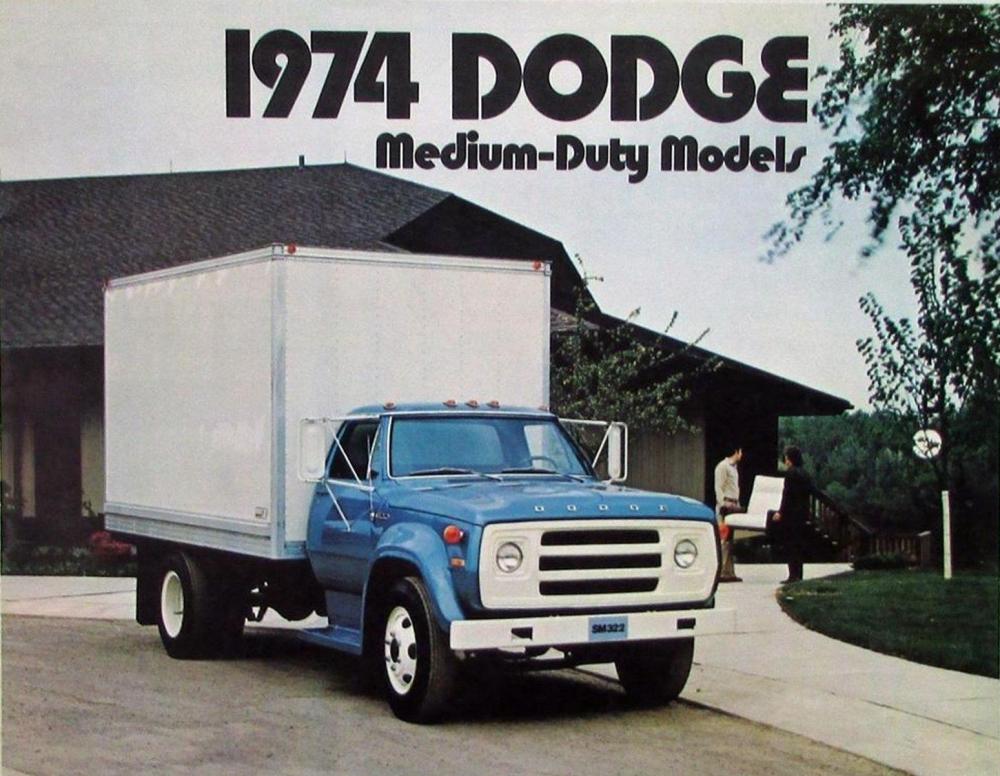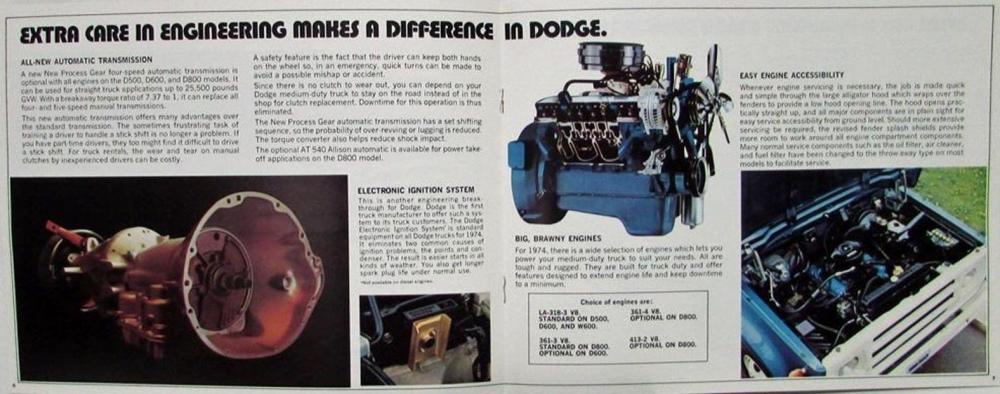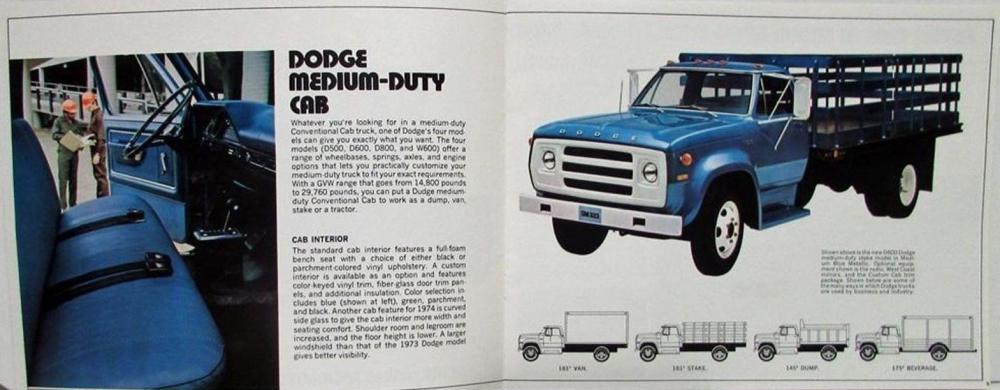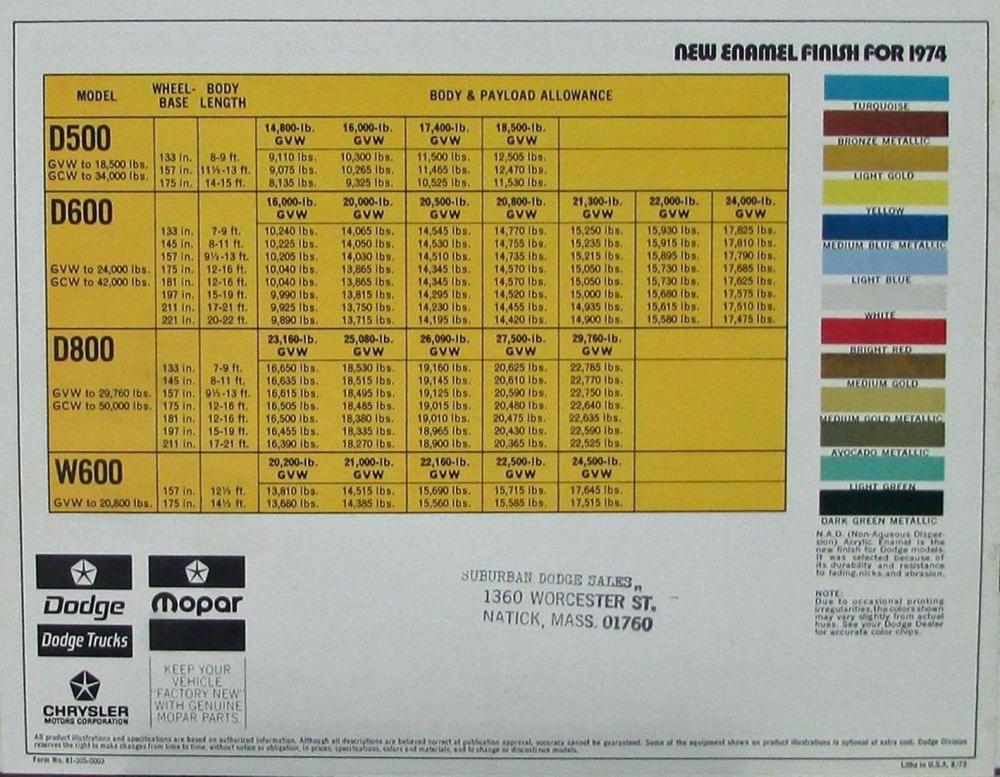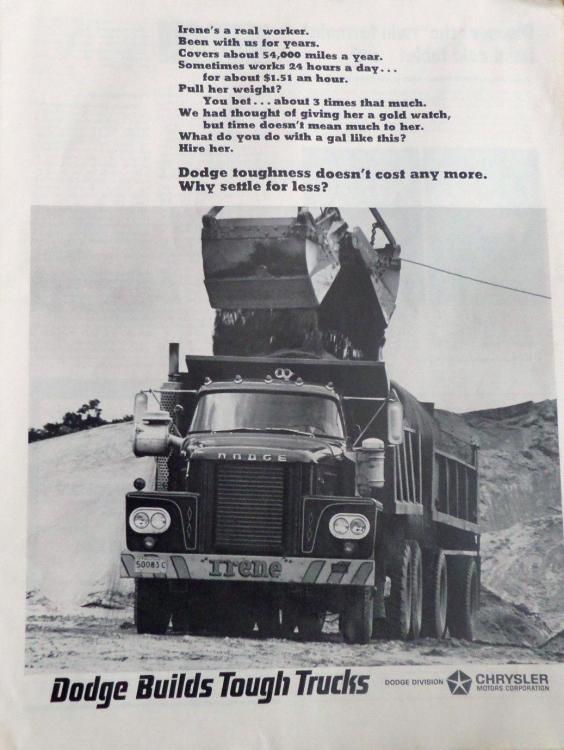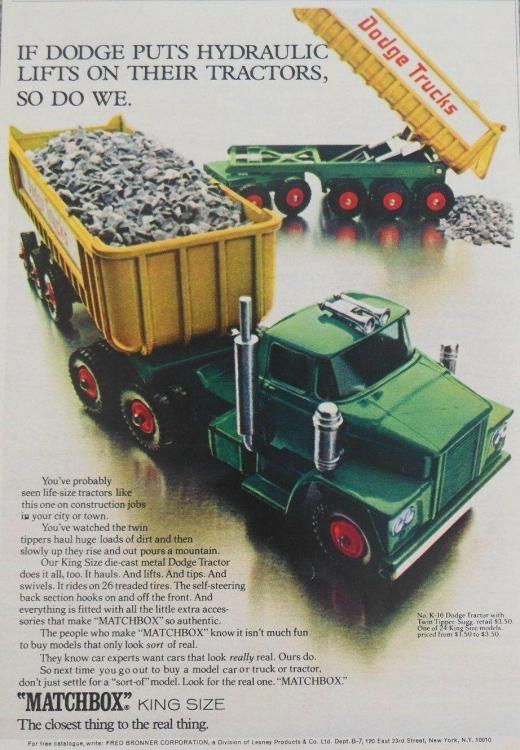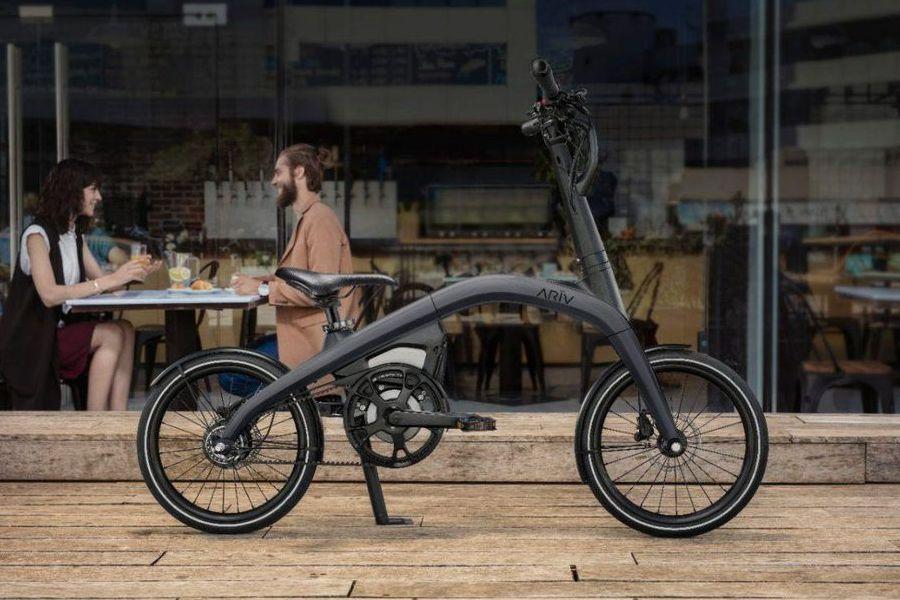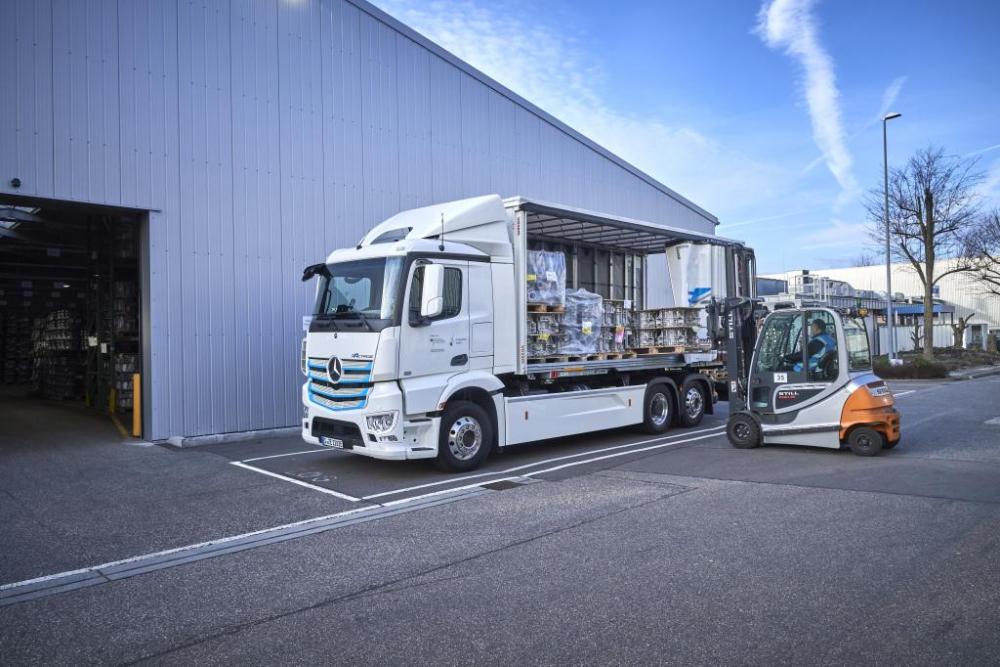
kscarbel2
Moderator-
Posts
18,885 -
Joined
-
Days Won
114
Content Type
Profiles
Forums
Gallery
Events
Blogs
BMT Wiki
Collections
Store
Everything posted by kscarbel2
-
Isuzu Trucks Australia Press Release / February 11, 2019 . . . .
-
Diesel News Australia / February 2019 The Iveco brand has had mixed fortunes in the Australian truck market, but is now unveiling the next stage of the Acco. The latest refresh sees the introduction of the X-Way model range and a completely new look for an old favourite. Tim Giles was there when the new trucks were unveiled. The Iveco organisation is one which has to balance a number of different options across its offering. It now has new International trucks on the market, plus a hangover from the old International brand, but still selling well, in the Acco, as well as a completely new range of European heavy duty trucks, the X-Way. While some models like the Acco continue to sell well, some of the newer editions to the Iveco offering coming from Europe have struggled to make an impact. For Iveco, the move over to the X-Way is an opportunity to break new ground and have better penetration in a truck market that is growing fast. One of the issues for the Iveco offering as a whole is the concept of the trucks as being a single brand. Many people understand there is an International brand, but then would describe the Acco as something separate and would have regarded the Powerstar as another type of truck. This would seem to leave the Iveco Stralis and Eurocargo as the only recognisable Ivecos in recent years. The introduction of the X-Way range will give the brand an opportunity to unify the brand into a more contiguous whole. This is being helped, in part, by one of the major changes taking place, the redesign of the Acco. The New Acco The basic layout and cab of the Acco design has been the same since 1972. Many features have been changed over the course of time between then and now but the basic skeleton on which the truck is built remains unchanged. Now, the entire truck is to be redesigned from the ground up. Iveco engineers have no choice, the next round of exhaust emission regulations will render the current design obsolete. The team at Iveco have had to go back to the drawing board and come up with a truck which can meet all of the needs of the current customer base, at the same time as meeting the environmental regulations of the future. The introduction of the X-Way models gives Iveco the ideal chance to work from an all-new base to create a truck which will have the opportunity become well-known as a garbage collection vehicle, a concrete agitator and a robust tipper, the new Acco. The parameters are clear and the close relationship between Iveco and the garbage and concrete operators of Australia means there is plenty of communication and feedback to make the new Acco able to handle the task with the same productivity and ease of use as the current model. The truck will be built in the Iveco facility at Dandenong in Melbourne’s Eastern Suburbs. It will be available as both a 6×4 and an 8×4 with specific wheelbases developed to suit each vocation in which it has succeeded in the past. The model is currently in an evaluation phase where the basic model is being taken from the core design and then adapted across platforms to suit each vocation. At its core the truck uses the basic X-Way chassis design and an adapted cabin from the same truck. Iveco front axles on a two leaf parabolic suspension will be matched with a Meritor rear-end suspended on the Iveco eight bag air suspension. Of course, traction control and diff locks will be included. Another major change will be the fitting of the Cursor 9 engine rated at either 310 or 360hp, replacing the current Cummins ISL and offering higher power ratings. This engine uses Iveco’s Hi-eSCR technology cleaning up the emissions with Selective Catalytic Reduction (SCR) and not using Exhaust Gas Recirculation (EGR) at all. The two engines put out 1300 and 1650Nm of torque respectively and will drive the back end through an Allison 3200 fully auto six speed transmission. Again, these torque ratings are an increase on those currently available with Cummins power. These are the aspects which will be radically different, but there are a number of requirements which will be matched in the new Acco. The wheelbase and chassis dimensions are vital when fitting equipment like garbage compactors. Final tare weight is still to be determined, but is expected to be very close to the original, depending on spec. These compactors have been honed over the years to do the job in the most efficient manner. The new chassis must be able to accommodate the body at the same ride height, length and fitting points. Wheelbase and turning circle are also vitally important in narrow suburban streets. The new Acco will either match or exceed the requirements of the garbage contractors. Wheel cut is expected to be much improved in the new Acco. The new cabin can be fitted with dual controls in the same way as the current Acco. The cabin itself will be roomier and taller with better visibility for the driver all round. Climate control will also be available along with the other comforts of a modern 21st century cabin, a distinct upgrade from the 1972 design. There are all the other trappings of the modern truck included in the standard specs of the new Acco. There will be Adaptive Cruise Control (ACC), Anti-lock Braking System (ABS), Electronic Braking System (EBS), Advanced Emergency Braking System (AEBS), Electronic Stability Program (ESP), axle load indicator, electronic battery cut-out and L.E.D daytime running lamps and rear L.E.D lights. “To replace a transport legend is no mean feat, so extensive local development has been undertaken in preparation for the next chapter of the Acco’s product life,” said Bruce Healy, Australia Business Director. “In developing the new Acco, Iveco has combined many of the much-loved attributes of the previous model with cutting-edge technology borrowed from the Stralis X-Way platform, it’s been a joint effort between our local engineering department and the design team at Iveco’s European headquarters. “Iveco is also very pleased to report that the Acco will continue to be manufactured right here in Australia at our Dandenong, Melbourne facility alongside our other truck models, the Stralis X-Way and Stralis AS-L.” .
-
Call it a weakness, I always zoom in on how the wiring, air hoses, AC hoses and coolant hoses are all plumbed, kind of a lead in to the truck's overall assembly quality, and this truck looks quite good. The Navistar team has been hard at work, and this is evidence.
-
Ford Trucks Launches F-MAX in Bosnia-Herzegovina
kscarbel2 replied to kscarbel2's topic in Trucking News
The people from Ford Trucks International are driven. Their passion for trucks......Ford Trucks......is overflowing. -
Ford Trucks International / February 15, 2019 Continuing to expand our presence throughout Europe, Ford Trucks is delighted to introduce our all-new F-MAX in Bosnia-Herzegovina. .
-
When you contacted your Mack brand sales person, or his service manager, what did they say ?
-
Ted Cruz: Make ‘El Chapo’ pay for the border wall
kscarbel2 replied to kscarbel2's topic in Odds and Ends
I'm good with that. The most innovative ideas come from thinking outside the box. -
Senator Ted Cruz, The Washington Post / February 14, 2019 With Democrats and Republicans locked in a staring contest over border security, there’s a solution here that secures the border and won’t cost the taxpayers one dime: Let’s build a wall, and make El Chapo pay for it. Joaquín Archivaldo Guzmán Loera, the infamous Mexican drug lord also known as “El Chapo,” was convicted Tuesday by a New York jury on 10 counts in connection with his years-long international drug-smuggling operation. El Chapo will be sentenced in June; after a history of high-profile escapes, he is expected to be incarcerated for life in ADX Florence, a “Supermax” prison in Colorado which houses dangerous criminals ranging from al-Qaeda operatives to the Unabomber. He deserves every day of a life sentence. In 2015, El Chapo boasted to Rolling Stone magazine that "I supply more heroin, methamphetamine, cocaine and marijuana than anybody else in the world.” That year, according to the Centers for Disease Control and Prevention, more than 50,000 Americans died from opioid and other drug overdoses in the United States. By 2017, that number had jumped to more than 70,000. According to CNN, El Chapo claimed in 2014 that he had killed between 2,000 and 3,000 people. While exact numbers of Americans murdered by cartel members are difficult to determine, these deaths are a tragically regular occurrence, whether innocent teachers visiting Mexico or members of law enforcement in border states such as my own. The former leader of the murderous Sinaloa cartel made a killing from the death, addiction and misery he trafficked, to the tune of $14 billion in ill-gotten revenue across the cartel’s operations. These criminal assets, which are forfeit to the federal government, should be used to stop future criminals such as El Chapo, and to protect Americans from the suffering that cartels and gangs such as MS-13 continue to export around the world. That’s why I have reintroduced the Ensuring Lawful Collection of Hidden Assets to Provide Order (EL CHAPO) Act in the Senate. It would direct our government to use El Chapo’s drug fortune — and the fortunes of other drug lords — to secure the U.S.-Mexico border and invest in a border wall, technology, manpower and infrastructure that is sorely needed for comprehensive border security. Criminal asset forfeiture can occur after a conviction in a variety of circumstances; when a criminal has used a building, car, or secret fund to conduct illegal activities, the government can take it away. In this case, the difference is the sheer size of El Chapo’s operation. No matter what fraction of El Chapo’s holdings the federal government manages to seize, it will put a dent in our nation’s border security bills without affecting any funds currently going to victims or law enforcement. The Democratic Party should embrace this solution. In 2013, the vast majority of Senate Democrats voted for 350 miles of additional border fencing. But in the lead-up to the last government shutdown, Senate Minority Leader Charles E. Schumer (D-N.Y.) and then-House Minority Leader Nancy Pelosi (D-Calif.) insisted that President Trump’s request for 234 miles was unacceptable because it violated the president’s campaign promise to have Mexico pay for it. “The American people are still paying the price,” Pelosi claimed in December. “Mexico is not paying for this wall.” Similarly, Schumer said: “The president repeatedly promised that Mexico would pay for his unnecessary and ineffective border wall.” I’m sure that Americans are grateful for Pelosi and Schumer finding one cause they won’t tax-and-spend for. But the EL CHAPO Act sidesteps these funding problems. Everyone should support taking money from murderers, drug smugglers and human traffickers such as El Chapo and using it to prevent murder, drug smuggling and human trafficking — all without costing the American taxpayers one dime, or adding anything to the federal budget. That’s what the EL CHAPO Act would do. People across the United States are desperate for a sign that Washington is ready and willing to protect them from dangerous criminals and porous borders. And taxpayers of every political background appreciate the increasingly rare occasions when Congress is fiscally responsible. The EL CHAPO Act satisfies all of these reasonable concerns. Congress has two clear mandates from the American people: secure the border and save money. So let’s build a wall, and make El Chapo pay for it.
-
The W600 all-wheel-drive models were rugged, with two cast iron levers protruding through the floorboard, alike a WM300. Many were exported. .
-
Stock buybacks spark debate U.S. companies repurchased more than $1 trillion of their own stock in 2018, but that may change going forward. In recent weeks, lawmakers on both sides of the aisle have proposed legislation that would either disincentivize or place limitations on the practice. Opponents of share repurchasing believe it promotes wealth disparity by rewarding shareholders at the expense of workers and long-term projects, while advocates say corporate leaders should be allowed to allocate capital however they see fit.
-
In 1977, the U.S. Armor Engineer Board at Fort Knox, Kentucky ran tests on several diesel-powered commercial trucks including a 1977 Dodge D700 equipped with a 636 cubic inch 3208 Caterpillar V8 paired with an Allison AT540. The hood had a bulge to accommodate the 3208.
-
Chance of a U.S. recession up, number of Fed rate hikes down Reuters / February 14, 2019 There is a one-in-four chance of a U.S. recession in the next 12 months, a scenario that should keep the Federal Reserve from raising interest rates next month, according to a Reuters poll of economists who now expect only one rate hike this year. Given a global economic slowdown and a dimming outlook for U.S. growth, economists said the Fed’s tightening cycle will likely draw to a halt before July. While financial markets have recovered from a deep sell-off late last year, the Feb 8-14 poll of over 110 economists showed a cut to the outlook for U.S. economic growth and the number of Fed rate hikes this year and next. “There is a lot of uncertainty and there are some good reasons to forecast a slowdown in 2019 as compared to in 2018,” said Jim O’Sullivan, chief U.S. economist at High Frequency Economics. “It certainly does makes sense for the Fed to take a pause on policy to see how things play out, because it is not impossible for the economy to slow down in 2019 between weakening global growth, tighter financial conditions and fading fiscal stimulus.” U.S. economic growth was forecast to slow and average 2.4 percent this year, a downgrade from January and the lowest since April last year. Over half the economists who answered an extra question warned any further escalation in the trade war would bring the next U.S. recession. That compared to about 60 percent of economists in a July 2018 poll who said the trade war did not pose a significant risk. The median probability of a recession in the next year rose to 25 percent from 20 percent in January. It held at 40 percent over the next two years, although the most pessimistic call was 75 percent. Expectations for Fed’s preferred inflation gauge were also slightly lowered from last month. All but a couple of economists polled forecast the Fed to keep rates on hold at 2.25-2.50 percent when it meets March 19-20, echoing Chairman Jerome Powell’s dovish tone. However, 51 of 101 economists said the Bank would take the fed funds rate to 2.50-2.75 percent next quarter, something over 75 percent of economists who answered an additional question said would not be a mistake. “The Fed is very focused on slowing growth. If anything, the bigger risk is if the Fed goes too late rather than too early,” said Ethan Harris, head of global economics at Bank of America Merrill Lynch. Only one hike is expected from the U.S. central bank this year, compared with 2 hikes suggested by the U.S. central bank’s own “dot plot” projections and in January’s poll. After next quarter’s hike the Fed is expected to stay on the sidelines through to the end of 2021 at least.
-
Ford's groveling campaign has begun. .
-
The US government officially controlled the internet until 2016 (and some say still unofficially controls it). So, if you're another sovereign country, large or small, they feel the right and need to control the internet within their borders. There's some logic to their argument. Hey, personally, I wish we'd all get together for a group hug and get along.
-
Where is Mary Barra taking GM ?
-
GM will launch electric bike sales in Europe Reuters / February 14, 2019 General Motors said it will begin selling electric bicycles in Europe in the second quarter. Two such bicycles, a compact bike and a foldable one, will launch first in Germany, Belgium and the Netherlands, markets where cycles powered by lithium-ion batteries are already popular, GM said in a statement Thursday. In Belgium and the Netherlands the compact e-bike would cost 2,800 euros ($3,165), while the folding one would cost 3,400 euros. In Germany, the prices would be 2,750 euros and 3,350 euros, respectively. GM first announced its e-bike plans in early November. It already has a presence in the electric car market through its Chevrolet Bolt vehicles, which start at roughly $36,000. The bikes will be sold under a new brand called Ariv (pronounced arrive). Riders can charge their bike batteries in about three and a half hours and get up to 40 miles of ride time with a single charge. GM has not announced any plans in the e-scooter market. Meanwhile, its U.S. rival Ford Motor made a reported $200 million investment in November to acquire Spin, an electric scooter rental firm based in San Francisco. GM sold its European Opel/Vauxhall car business to Peugeot maker PSA Group in 2017. .
-
What was termed great, is no longer.....great. That said, I always enjoy flying on Emirates' A380s.
-
Airbus ends A380 production Tim Hepher, Reuters / February 14, 2019 TOULOUSE, France - Loved by passengers, feared by accountants, the world’s largest airliner has run out of runway after Airbus decided to close A380 production after 12 years in service due to weak sales. The decision to halt production of the A380 superjumbo is the final act in one of Europe’s greatest industrial adventures and reflects a dearth of orders by airline bosses unwilling to back Airbus’s vision of huge jets to combat airport congestion. Air traffic is growing at a near-record pace but this has mainly generated demand for twin-engined jets nimble enough to fly directly to where people want to travel, rather than bulky four-engined jets forcing passengers to change at hub airports. And while loyal supporters like top customer Emirates say the popular 544-seat jet makes money when full, each unsold seat potentially burns a hole in airline finances because of the fuel needed to keep the huge double-decker structure aloft. “It’s an aircraft that frightens airline CFOs; the risk of failing to sell so many seats is just too high,” said a senior aerospace industry source familiar with the program. Airlines had initially rushed to place orders, expecting it to lower operating costs and boost profits as the industry crawled out of a slowdown in tourism since September 2001. Airbus boasted it would sell 700-750 A380s, which nowadays cost $446 million at list prices, and render the 747 obsolete. In fact, A380 orders barely crossed the 300 threshold and the 747 has outlived its rival, after reaching the age of 50 this week. The seeds of the A380’s fall from grace were already present behind the scenes of the 2005 launch party. Despite public talk of unity, the huge task was about to expose fractures in Franco-German co-operation that sparked an industrial meltdown. When the delayed jet finally reached the market in 2007, the global financial crisis was starting to bite. Scale and opulence were no longer wanted. Sales slowed. At the same time, engine makers who had promised Airbus a decade of unbeatable efficiencies with their new superjumbo engines were fine-tuning even more efficient designs for the next generation of dual-engined planes, competing with the A380. Finally, a restless Airbus board started demanding a return and stronger prices just when the plane desperately needed an aggressive relaunch and fresh investment. Despite its own deep industrial problems, Boeing was winning the argument with its newest jet, the 787 Dreamliner. It was designed to bypass hubs served by the A380 and open routes between secondary cities: a strategy known as “point to point”. Airbus fought back, arguing that travel between megacities would nonetheless dominate air transport. But economic growth would splinter in ways Airbus did not predict. Intermediary cities are growing almost twice as fast as megacities. That’s a boon for twinjets like the Boeing 787 and 777 or Airbus’s own A350, which has outsold the A380 three to one. Airbus Chief Executive Tom Enders, who was rarely seen as an enthusiastic backer of the A380, toyed with ending the project about two years ago but was persuaded to give it a last chance. But with Emirates unable to hammer out an engine deal needed to confirm its most recent A380 order, time had finally run out. . .
-
Daimler Press Release / February 14, 2019 Field tests of the 25-tonne eActros from spring 2019 onward with logistics company Logistik Schmitt between Ötigheim and Rastatt Daily tours of approx. 168 kilometres in 3-shift operations Next step: comparative tests of the eActros as a semitrailer tractor unit with higher tonnage and range and the eWayBW catenary project Already ongoing customer testing of the eActros continues in parallel – in total over 30,000 electrically driven kilometres so far Stefan Buchner, Head of Mercedes-Benz Trucks: "There is every indication that we are on the right track with our eActros concept. We are delighted that Logistik Schmitt will now use the eActros and are excited about further interesting findings gained from practical operations." Gaggenau / Stuttgart – With the fully electric eActros truck, Mercedes-Benz Trucks demonstrates that it is already possible today to complete heavy distribution tasks locally emission-free and quietly in the Murg valley in Southern Germany. The official handover of the eActros to regionally based logistics company Logistik Schmitt took place today on occasion of Daimler Trucks’ annual press conference held at the Unimog-Museum in Gaggenau. As part of the eWayBW project, commercial transport will be electric on the B462 federal road around Rastatt with the test operation of catenary trucks as of 2020. Whilst preparations for the construction of the necessary infrastructure are still ongoing, the eActros is mobile with its battery-electric drive, fully flexible and in need of only minimal infrastructure; nothing more than a charging station. From spring of this year, Logistik Schmitt will be operating the eActros in place of a conventional diesel truck as part of a field test transporting transmission housings. The eActros will be tested on an around 7 kilometres stretch in a demanding three-shift system between Logistik Schmitt’s warehouse in Ötigheim and Rastatt's Mercedes-Benz Gaggenau plant. The daily tour of the 25-tonne truck totals around 168 kilometres. This represents the kick-off to a series of eActros field tests taking place over several years in the Murg valley and the surrounding region. As a next step, comparative tests with the catenary project will be carried out with an advanced version of the eActros as a semitrailer tractor variant with higher tonnage and range. Stefan Buchner, Head of Mercedes-Benz Trucks: “Our eActros has been out on public roads since June 2018 and has already covered more than 30,000 kilometres with its battery-electric drive. Together with customers, we have been compiling experiences of the eActros in regular everyday operations since September. Its range of 200 kilometres has proved to be absolutely realistic. The eActros completes its transportation tasks regardless of the route or other factors. The expenses involved in installing one charging station at each customer's premises is comparatively low. There is every indication that we are on the right track with our eActros concept. Our aim as of 2021 is to have locally emission-free and quiet heavy-duty series production trucks operating in cities – operating economically on a par with diesel trucks.” “We are delighted that Logistik Schmitt will now use the eActros and are excited about further interesting findings gained from practical operations”, Buchner continues. First phase: practical test on the commuter route from Ötigheim to Rastatt Rainer Schmitt, Executive Partner of Logistik Schmitt: “In view of new challenges in the logistics business, we consistently have a look at the latest innovations – if we recognise potential in them. The approach which Mercedes-Benz Trucks has taken with the eActros has impressed us across the board. In testing the eActros, we are happy to contribute towards making the transport business of the future more ecological and sustainable. The commuter route from Ötigheim to Rastatt is ideally suited for this undertaking. We can thus put the eActros through its paces in difficult three-shift operations – under continuous stress. The eActros drives along precisely the same route as a conventional diesel-powered Actros which it is intended to replace. This provides an excellent opportunity for comparison.” In the first phase of the eActros test operation, Logistik Schmitt is integrating a vehicle with a swap body into the company fleet. The eActros transports up to twelve tonnes and drives twelve tours a day. The batteries in the eActros are charged also whilst the vehicle is being loaded or unloaded so that the total 200-kilometre range of the eActros can be optimally used. Initially the vehicle will be charged using a mobile charging station. Second phase: parallel testing with the catenary truck As of the second phase of the eActros project in the Murg valley, the 25-tonne truck from the first phase will be replaced by an advanced version of the electric truck in form of a semitrailer tractor unit. Using the eActros semitrailer, Logistik Schmitt will deliver axle components along the 14 kilometres from the warehouse in Ötigheim to the Mercedes-Benz Gaggenau plant – mainly via the B462. This route is, for the most part, the same as that for the catenary project. The specifications of the eActros semitrailer truck will be comparable to those of the overhead catenary trucks, among other things in terms of the higher tonnage and range. This parallel testing of the eActros and the catenary trucks will take place for approximately one year and will deliver the most important data and findings necessary for comparing both concepts, e.g. in what way the vehicles are suitable for this operation. Third phase: direct comparison with the overhead catenary truck During the third phase of the project, which is expected to take place within the second phase, the eActros semitrailer truck will travel the exact catenary truck route for approximately one to two weeks so that a direct comparison can be made. This will serve to validate the second phase. During this direct comparison, the eActros will transport rolls of paper the 18 kilometres from the paper mills in Gernsbach-Obertsrot to the Fahrner logistics site in Kuppenheim – just like the trucks involved in the overhead-lines project. Conventional diesel Actros as a starting point for the concept comparison A conventional diesel Actros equipped to the Euro VI emissions standard and fitted with measuring equipment will serve as a neutral starting point for the comparison of the concepts and will drive along the overhead-lines route. It will then be possible to compare the energy consumption of the electric trucks – battery-electric and catenary – with the consumption of the diesel truck. Currently no plans for catenary trucks at Daimler As a global manufacturer, Daimler is working on future-oriented solutions that have great potential for worldwide implementation. Due to the high infrastructure costs involved, the company does not see potential in overhead lines at present – also in view of the rapid development of battery and fuel cell technology. About eWayBW eWayBW is a pilot project for the research of hybrid trucks electrically driven with the help of overhead power lines. On the test route on the B462 between Kuppenheim and Gernsbach-Obertsrot three sections will be electrified with overhead power lines. The specially equipped trucks can draw electric current from the overhead power lines. At the same time, a battery is charged which provides energy for further travel once the truck no longer has contact with the overhead power lines. The operation of such hybrid catenary trucks will be examined during a three-year pilot phase. The project is accompanied by scientific research. Planning, approval and construction of the pilot route will cost 17.6 million euros (source: www.ewaybw.de). About the operational eActros "innovation fleet" The so-called eActros "innovation fleet" started in September 2018. A total of 20 customers are using the eActros as a near-series-production 18 or 25 tonne truck. The customers drive the eActros in routine operations, testing its suitability for daily use. All test customers operate in short-radius distribution and use the eActros for tasks, which would otherwise be carried out by conventional diesel vehicles. The customers cover a broad spectrum of different sectors and categories and use a range of body types. The test series can be broken down into two phases, each with ten customers and spanning a total of around two years. The development and testing of the heavy-duty electric truck in short-radius distribution operations is sponsored as part of the "Concept ELV²" project to varying degrees by the German Federal Ministry for the Environment (BMUB) and the Federal Ministry for Economic Affairs and Energy (BMWi). The eActros: architecture based entirely on electric drive The eActros is based on the frame of the Mercedes-Benz Actros. Beyond that, the eActros uses an architecture based entirely on electric drive with a large proportion of specific parts. The drive comes from two electric motors near the wheel hubs on the rear axle. Their output is 126 kW each, and the maximum torque is 485 Nm each. Downstream of the transmission that equates to 11,000 Nm each. The driving output is therefore on a level with a diesel truck. The maximal permitted axle load is the usual 11.5 tonnes. The energy is stored in lithium-ion batteries with a capacity of 240 kWh. Depending on the available charging capacity, a full charge takes between two and eleven hours (at 150 or 20 kW respectively). Daimler commercial vehicles with an extensive electric portfolio Daimler has had experience of working with electric trucks since 2010 and its first fully electric series production truck has been on the market and used by customers since 2017: the light-duty Fuso eCanter truck. At the end of 2018, Daimler Trucks handed over the first medium-duty truck, a Freightliner eM2 to a customer and thus began practical tests in the USA for heavy and medium-duty electric trucks. The eCascadia for heavy-duty distribution is also to be tested. In the bus sector, delivery of the first Mercedes-Benz eCitaro took place at the end of the last year and the buses are in test operation with real customers. The Thomas Built Buses brand is launching the eC2 (also known as Jouley) in a small series. The first vehicles will be handed over to customers in 2019. With regard to vans, the Mercedes-Benz Vans eVito recently became available and has already been delivered to its first customers. In the second half of 2019 the eSprinter will follow. The vehicles from Daimler Trucks, Daimler Buses and Mercedes-Benz Vans will thus cover the entire range of urban traffic with electric vehicles. .
-
Daimler Press Release / February 14, 2019 The Daimler Trucks umbrella encompasses five strong truck brands, offering pioneering technologies and tailor-made products for disparate applications all over the world. .
-
Volvo Group shows Mack Granite-based M917A3 Dump Truck at AUSA 2018
kscarbel2 replied to kscarbel2's topic in Trucking News
Meritor Announces Complete Drivetrain Solution for Mack Defense's M917A3 Heavy Dump Truck for U.S. Army Meritor Press Release / February 14, 2019 TROY, Michigan -- Meritor today announced it has been selected to equip Mack Defense's new heavy-duty dump trucks for the United States Army with a comprehensive drivetrain solution from Meritor including its MX810 front drive steer axle, transfer case, ProTec™ Series 50 tridem drive beam axles and Permalube™ RPL Series drivelines. The Mack Granite® armored and armor-capable dump trucks are scheduled to be delivered to the U.S. Army Corps of Engineers through 2025. "With this solution, Mack and Meritor have taken steps to ensure that our soldiers can execute their missions with confidence," said David Damian, director, Defense for Meritor. "Our axles and related components are widely applicable to multiple military applications." Meritor's complete drivetrain solution for the Mack dump truck includes: MX810 front axle with weight rating up to 24,000 pounds offers maneuverability and excellent ground clearance MTC-3220FV high-torque transfer case is compact and rugged for ease of maintenance and serviceability while remaining durable enough for the demands of military applications ProTec Series 50 beam axles, engineered to military specifications with gross axle weight rating (GAWR) up to 30,000 pounds per axle Permalube RPL Series drivelines, designed for gear-fast/run-slow drivetrains and high-torque applications that are permanently lubricated and sealed for life to reduce maintenance compared to conventional drivelines "Our drivetrain solution for this vehicle meets military requirements for performance, mobility, durability and weight-efficiency," Damian said. "These proven technologies are available to defense organizations and companies that develop and supply armored tactical and combat vehicles or platforms in multiple configurations." Mack Defense, LLC, is part of the Volvo Group, one of the world's leading manufacturers of trucks, buses, construction equipment and marine and industrial engines. The Group also provides complete solutions for financing and service. The Volvo Group, which employs almost 100,000 people, has production facilities in 18 countries and sells its products in more than 190 markets. In 2018 the Volvo Group's sales amounted to about $43 billion. The Volvo Group is a publicly-held company headquartered in Gothenburg, Sweden. Volvo shares are listed on Nasdaq Stockholm. For more information, please visit www.volvogroup.com. -
Detroit Press Release / February 8, 2019 Find out why distributorship Flagg Inc relies on Freightliner M2 106 trucks with DD5 engines to help make their business successful. .
-
Cummins Press Release / February 13, 2019 What is Cummins Integrated Power? A portfolio of powertrain solutions, across a variety of fuel options, Cummins Integrated Power represents your power of choice. With key technologies expertly paired, you’ll get a fully integrated powertrain optimized for your operations. Learn more: https://www.cummins.com/integrated-power .
BigMackTrucks.com
BigMackTrucks.com is a support forum for antique, classic and modern Mack Trucks! The forum is owned and maintained by Watt's Truck Center, Inc. an independent, full service Mack dealer. The forums are not affiliated with Mack Trucks, Inc.
Our Vendors and Advertisers
Thank you for your support!


